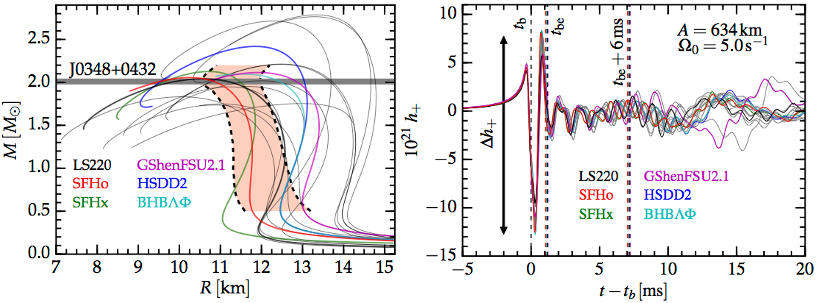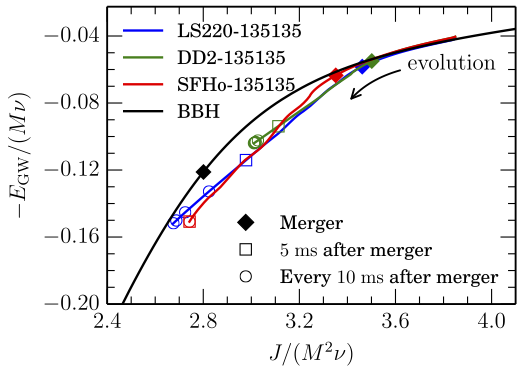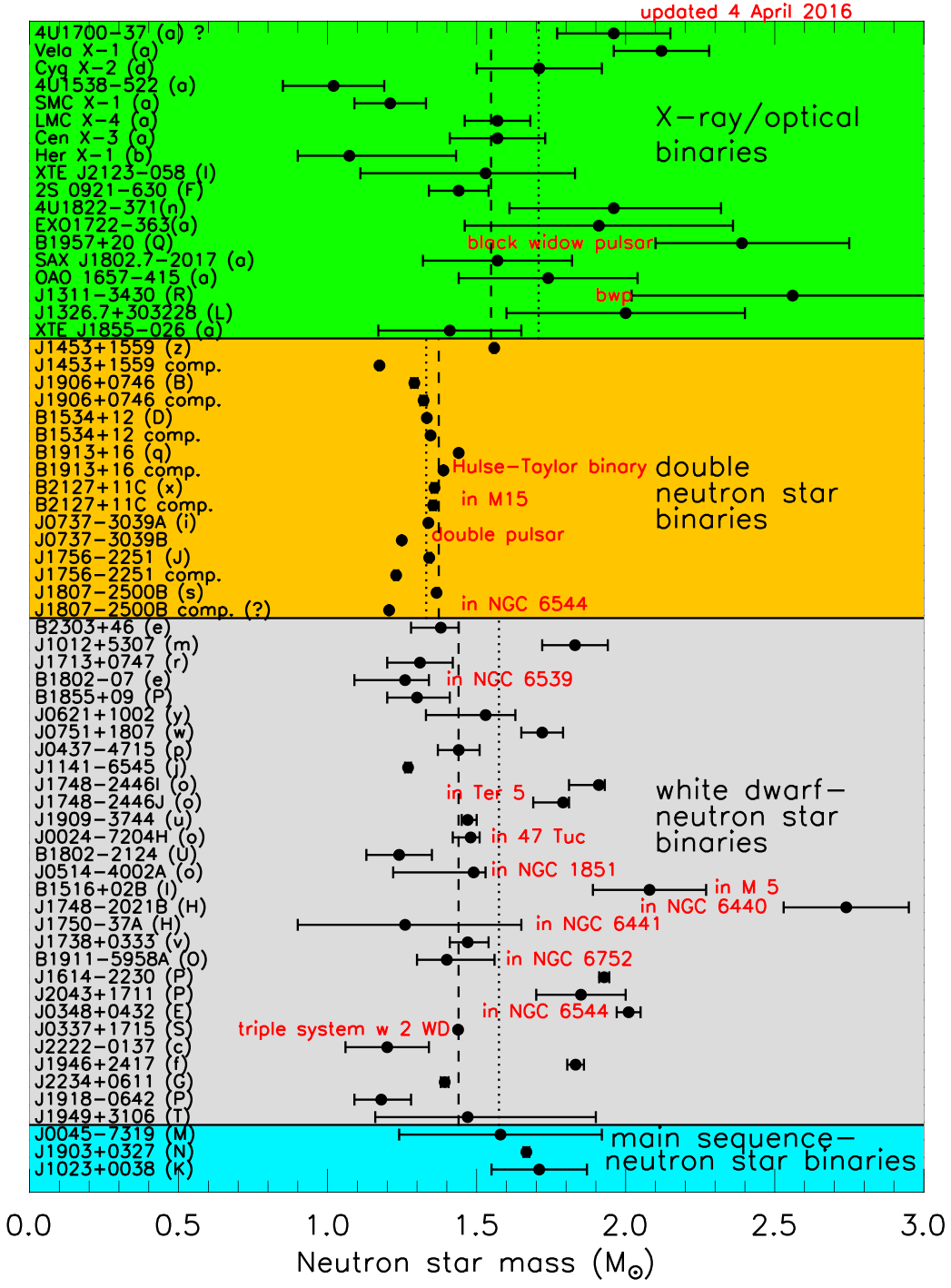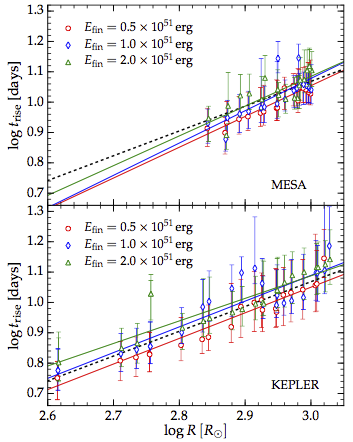Gravitational Waves from Binary Black Hole Mergers Inside of Stars
New paper out by Fedrow et al., arXiv:1704.07383. Learn more and access data at https://stellarcollapse.org/bbhgas!
Richers et al. 2017: Equation of State Effects on Gravitational Waves from Rotating Core Collapse

Richers et al., arXiv:1701.02752 carried out more than 1800 axisymmetric general-relativistic simulations of rotating core collapse, using 18 different nuclear equations of state. The gravitational waveforms are available here on stellarcollapse.org!
New version of SNEC -- The SuperNova Explosion Code available!
We have released version 1.01 of SNEC -- it's available for download from stellarcollapse.org/SNEC. SNEC 1.01 implements the same physics as SNEC 1.00, but is about a factor of two faster thanks to various optimizations.
How loud are Neutron Star Mergers?
Our new paper led by Sebastiano Bernuzzi is out in Physical Review D! The paper is about a large set of neutron star merger simulations, using three different finite-temperature nuclear equation of state and binary parameters motivated by the galactic double neutron star population. Our focus was on how "loud" these mergers are in gravitational waves and what phase of their evolution is the "loudest".
Also exciting: We are providing open access to the gravitational waveforms extracted from our merger simulations. For details, see: https://stellarcollapse.org/Bernuzzi2016. Here is the money plot from the paper:

This figure shows that most of the gravitational wave energy in the entire history of a coalescing neutron star binary is actually emitted in the first ~10 ms after merger
Updated Neutron Star Mass Table!
Jim Lattimer has been so kind to provide us with an updated version of his observed neutron star masses table. See here: https://stellarcollapse.org/nsmasses

Red Supergiant Radii and the Rise Times of SN IIP Light Curves
New paper by Viktoriya Morozova, Tony Piro, Mathieu Renzo, Christian Ott:
"Numerical Modeling of the Early Light Curves of Type IIP Supernovae", submitted to ApJ, arXiv:1603.08530.
We show, using SNEC, that there is a tight correlation between Type IIP (plateau) core-collapse supernova rise times (in g-band) and the radii of their progenitor red supergiant stars. See below figure! SNEC and all inputs to our models are available as part of our open-science initiative here on stellarcollapse.org: https://stellarcollapse.org/Morozova2016

We don't just do core collapse: New Neutron Star Merger results in!
The One-Armed Spiral Instability in Neutron Star Mergers and its Detectability in Gravitational Waves
Radice, Bernuzzi, & Ott, arXiv:1603.05726, read more here: https://stellarcollapse.org/BNSm1
stellarcollapse.org moved to new server
Welcome to the new stellarcollapse.org! We just completed the move to a new server with faster CPUs and more disk space. We have upgraded the content management system from Drupal 6 to Drupal 8. Stay tuned for more simulation results that will appear soon on stellarcollapse.org!
Please contact Christian Ott at cott #at# tapir.caltech.edu if you notice any problems with the site.
A large-scale dynamo and magnetoturbulence in rapidly rotating core-collapse supernovae, Nature Nov 30, 2015
Mösta et al. recently published a break-through study on magnetoturbulence in rapidly rotating stellar collapse in Nature. They show that magnetohydrodynamic turbulence in the shear layer around a newly born proto-neutron star kicks off a highly efficient dynamo process that creates large-scale, ordered magnetar-strength (> 10^15 G) magnetic field. This field is strong enough to power hyperenergetic type Ic-bl explosions, a rare but extreme subclass of core-collapse supernovae, that are 10x more energetic than the average garden-variety supernovae and also make up all supernovae connected to long gamma-ray bursts. In addition, their simulations provide a first glimpse on a formation scenario for magnetars, very strongly magnetized neutron stars, that are left behind in these explosions.
The source code used to run the simulations and the initial data are available here. They have also created 3D visualizations of the magnetic field amplification in their simulations, embedded below.
